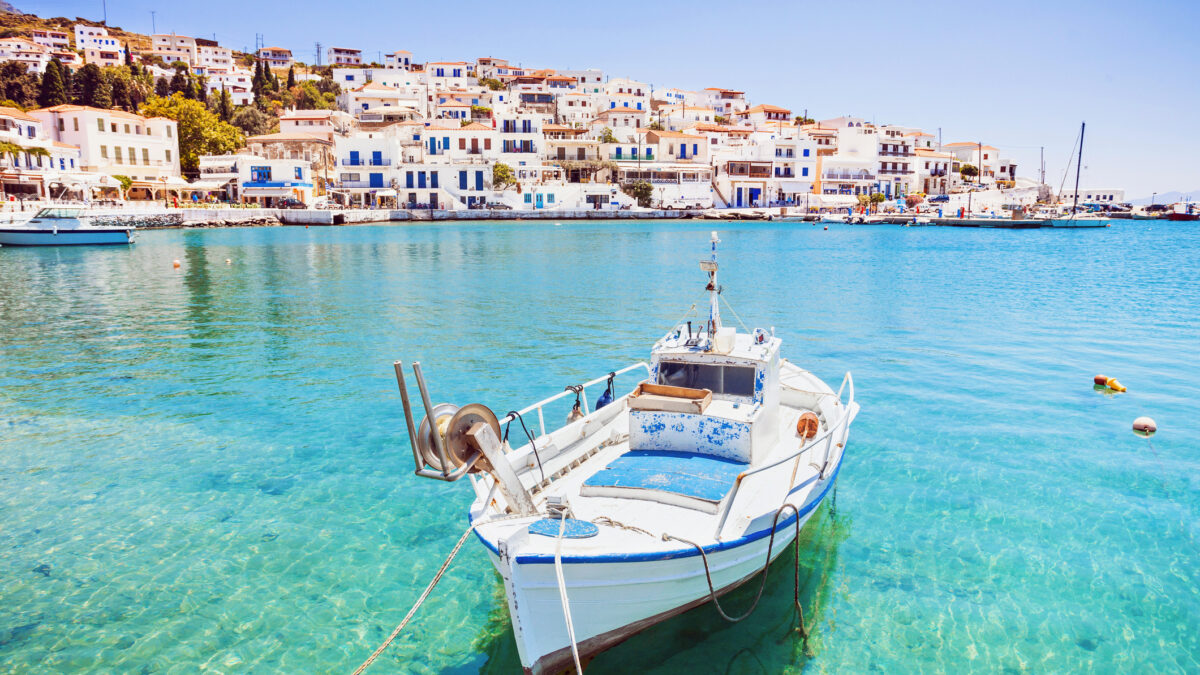Andros, the northernmost of the Cyclades and the second largest after Naxos, is renowned for its stateliness and culture. It is no surprise, then, that the island is home to numerous museums visited by tourists from all over the globe. Perhaps best known among these is the Goulandris Museum of Contemporary Art in Chora. The island’s historical prosperity is on full display in the imposing manor houses of the sea captains, luxurious and impressive buildings featuring all the hallmarks of early 20th-century architecture. Shipping played a vital role in the development of the island.
Andros – like many other Greek islands – owes its name to mythology and its first inhabitant, the divine offspring Andros.
Andros is also set apart by its fertile farmlands. The island’s natural beauty is on full display in its verdant centre, with its impressive freshwater springs. The island also boasts a number of fascinating hiking trails.
Stateliness and culture abound in Chora, the island’s main settlement. Events held here in the summer draw visitors from around the world. Other settlements well worth a visit include Batsi, Korthi and Stenies. Andros has about 30 beaches, many of which are unspoiled and far removed from mass tourism. The island’s best-known beaches are Tis grias to pidima, with its colossal stone formation jutting out of the sea, the organised beach Chrysi Ammos, the sophisticated Zorkos with its golden sands, and Achla.
Gastronomy
The fertile farmlands of Andros are the foundation of the island’s agriculture and livestock breeding, which produce a plethora of local products. Some of the island’s most important products are greens, zucchini, artichokes and local cheeses such as volaki, kopanisti, malako and petroti. Animal-based products of Andros include sausages seasoned with anise, and louza – smoked pork with aromatics – not to mention lamb and goat cooked according to various traditional Greek recipes.
But perhaps the most widely known local dish on Andros is fourtalia, an omelette with pieces of locally produced sausage and French fries. Whether in its traditional form or with a modern twist, it is available at all the taverns and restaurants on the island. In addition, some taverns and cafés enrich the recipe with seasonal vegetables such as zucchini and broad beans. It’s worth noting that the island has a special relationship with handmade pasta, with factories producing pasta since the early 20th century. One of these, Fabrica, in the village of Stenies just outside of Chora, once produced the largest volume of pasta in the entire Balkans. Sadly though, none of these factories operate today. Visitors to the island should sample the freshly caught fish and seafood, not to mention the local meat.
Sweets also occupy a prominent position in the culinary culture of Andros. Connoisseurs come from far and wide to sample the island’s sweets, which have a history going back to the early 20th century. Spoon sweets, almond sweets, kaltsounia and pastitsakia all feature prominently, but the centrepiece is the island’s fluffy nougatina.
How to get there
Andros sits just southeast of Evia and belongs to the Cyclades. It is serviced by ferry from the port of Rafina.










